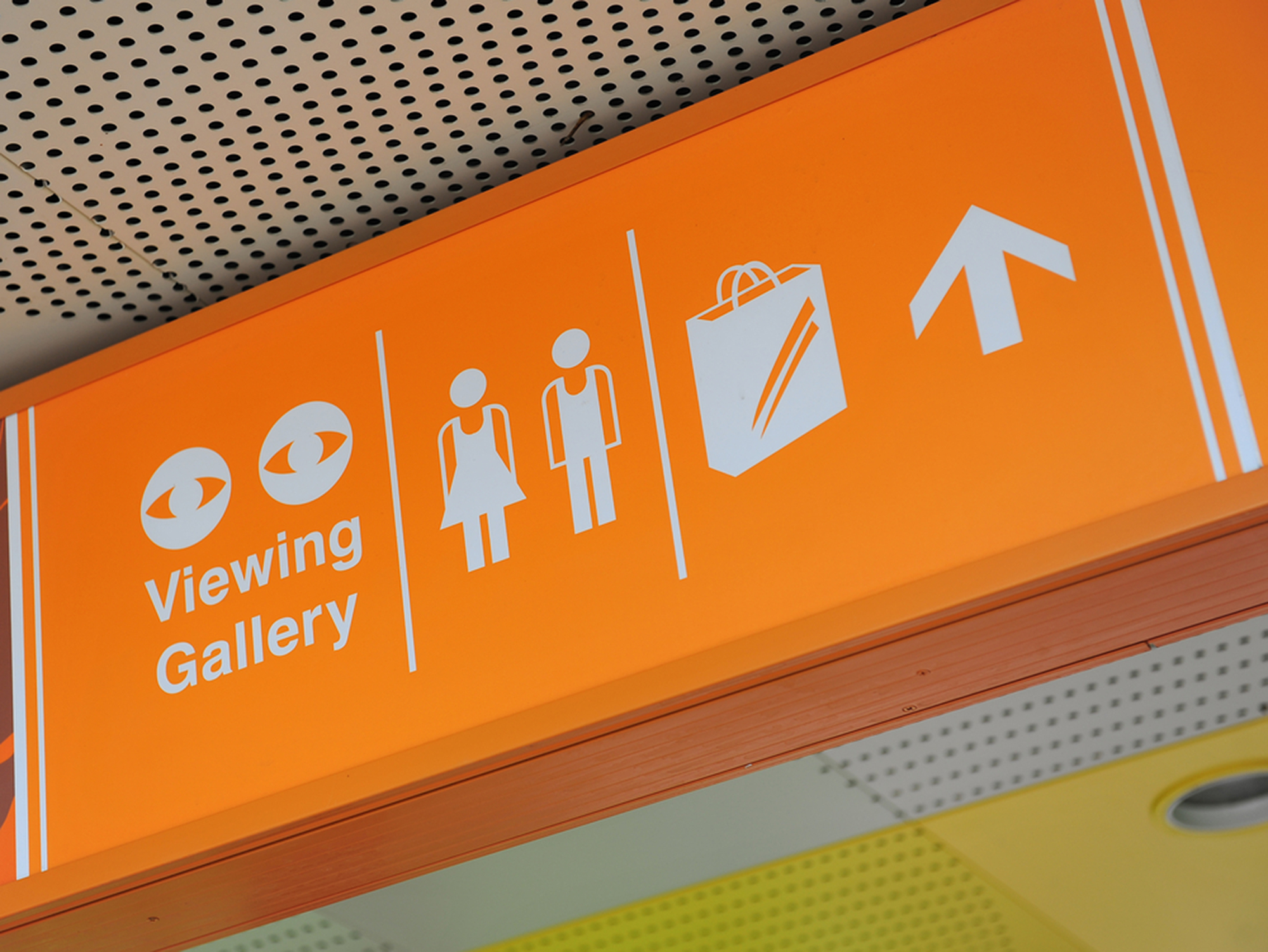Table Of Content
FOUND created a new visual identity and experiential graphics program for MISSION CITY CENTER in the heart of Silicon Valley. It’s been almost 60 years since the term ‘wayfinding’ was introduced yet it remains one of the lesser-known fields of design. A thoughtfully designed naming system can spare you this hefty expense. A clean and straightforward design is the best way to convey essential information to visitors. They should be able to take in all the necessary details with a glance. Small text sizes, ornate fonts, and convoluted messaging can confuse (and annoy) visitors.
MISSION CITY CENTER
Being able to see what is ahead will promote curiosity and exploration, and can reinforce the end-user’s mental map of the space. Most of the time those same sight lines can be used in reverse to help someone backtrack if need be. Changes in color, large scale graphics, or interior landmarks orient users without the visual clutter. SEPTA is excited for the future launch of this project and improving your transit experience.
Elements of Wayfinding
They reflect a brand’s personality and speak volumes about its identity. As a campus-scale project, the urban aspect of the Singapore University of Technology and Design needs to be considered for orientation. The hierarchical set-up throughout the urban, architectural and interior scales in building blocks, courtyards, circulation and programmes provides a coherent spatial framework for wayfinding. Accordingly, signage and colour coding further assist navigation through the campus. Wayfinding is an important aspect of design within different scales. It is defined by the use of spatial and environmental cues to move from one place to another.
Urban Environments
One can let their guard down with the understanding of the environment and these elements of certainty provide assurance and comfort. All aspects of the wayfinding profile assist in creating certainty for the user. Variety keeps things interesting while providing a functional breakdown of the overall experience into smaller more intimate experiences. These varying areas denoted by differing elements, carry the same DNA origins, but help with the user’s cognitive mapping of an environment.
What is a wayfinding strategy?
Natural History Museum launches £150000 wayfinding tender - Design Week
Natural History Museum launches £150000 wayfinding tender.
Posted: Fri, 11 Aug 2023 07:00:00 GMT [source]
If you’ve ever been desperate to use the restroom in an unfamiliar public space, you understand why wayfinding matters. Over and above the essentials – like bathrooms and exits – wayfinding ensures an effective and efficient traffic flow. In an era where every brand, organization, and institution is vying for people’s attention, custom wayfinding graphics and signage have become an indispensable element of commercial design.
A naming system can help visitors navigate your space, especially regarding large complexes and properties. Long sets of numbers or unclear labelling can confuse visitors, ruining their experience and creating intense feelings of frustration. It would be best to double-check that all wayfinding signage is accurate and pointing customers in the right direction.
Understanding these challenges is crucial for designing a wayfinding system that accommodates the needs of all users. Auditory wayfinding can be used in conjunction with static wayfinding to provide a more accessible wayfinding experience for people with visual impairments. Examples of auditory wayfinding include spoken directions from a mobile app or strategically placed speakers that emit distinctive sounds to guide users along a path.


The goal is not more signage, but better collective wayfinding elements. Especially important within the built environment, wayfinding provides visual cues to help guide people to their destinations with ease and comfort. Working in close collaboration with key stakeholders and design consultants, the process of crafting a wayfinding program starts with a careful flow analysis exploring how people move thru places. Following this discovery phase, a visual kit of parts that carries the brand voice is designed to match the user’s needs. The design process engages the user from varying perspectives to create a comprehensive wayfinding system that serves the community and evolves over time as user’s needs change. Effective wayfinding is essential for any environment as it helps people to navigate their way around environments easily.
Stacked building blocks form signage for children's daycare in Sydney
Today we will explore the various wayfinding signage designs and their diverse applications. We call this part of the design process Wayfinding Strategy –how travelers can quickly come to understand and efficiently use the place. This type includes physical signs, maps, other non-digital elements and static digital images that provide users with essential information about their surroundings. These systems are cost-effective and need little maintenance, making them popular choices for many environments. However, they may not be as versatile or adaptable as some of the more advanced options. It reduces the stress and anxiety of navigating a new area or building.
UNStudio compiled a set of wayfinding tools developed and implemented in several projects across different typologies and scales. It’s centered around security and risk concerns and sets limits—what is and isn’t worthy in your offices. It’s utilized to set up and fortify guidelines, wellbeing principles, and protection desires.
Integrating traditional signage with digital solutions, such as mobile apps and interactive kiosks, can create a seamless navigation experience that connects people to their surroundings. These types of wayfinding signages are easy to spot and understand at a glance. Identification wayfinding signage designs always need to be more precise and straightforward. It aims to give individuals quick directions to reach their desired destination from their current location. In the hospitality sector, your choice of wayfinding signage significantly contributes to the overall guest experience.
The departing passenger needs to be dropped off or get parked, find the correct airline, check-in, negotiate security and the find the correct gate, all on a schedule. Transferring between planes is also a complicated process requiring successful interaction as both an arriving and departing traveler. A stadium housing tens of thousands of fans needs wayfinding for their guests to find the ticketing booth from their parking spot. Monetize users with Phunware's new Rewarded Surveys, a less intrusive alternative to standard ads.
They’re best utilized at intersections and territories without a reasonable traffic stream. When there is a narrative you want every user to view, this rule works well. Every possible route that the user might take across space should convey this crucial tale. This main path can open up opportunities for diversions, side trips, and research, which will eventually lead back to continuing the main narrative.
The wayfinding solutions work on both iPhones and Android devices and enhance navigation around the VHC Health facility including floor levels. The emotional impact of wayfinding can be influenced by a number of factors, including the design of the wayfinding system, the user’s familiarity with the environment, and the user’s individual personality. In a smart city, digital kiosks, connected streetlights, and other infrastructure can communicate with each other and with users, making navigation seamless and efficient. As cities become smarter and more connected, wayfinding is set to reach new heights.
The elements of effective wayfinding include signage, lighting, color, materials, architecture, and technology. They can be used individually or in conjunction with one another for different environments. Provide signage at key decision points for effective wayfinding design. Especially at intersections where taking a wrong turn would waste time or if other visual/tactile cues aren’t enough to help the end-user make an informed decision. Using signage to lead people back to Nodes or Landmarks will further reinforce those locations in the end-user’s mental map. Starting from building wayfinding signage, retail wayfinding signage, and hospital wayfinding signage to hotel wayfinding signage, airport wayfinding signage and more.
Sydney is in the midst of a wayfinding revolution, and we’re proud to be one of the studios that is leading the way. Our work touches the lives of tens of thousands of people every day, and we are passionate about seeing the process through from auditing, planning and design through to manufacturing and implementation. As an industry, we need to educate our clients about the value of wayfinding and why it deserves a budget of its own. We also need to explain how the best wayfinding systems adhere to best practice, and stand the test of time.

No comments:
Post a Comment